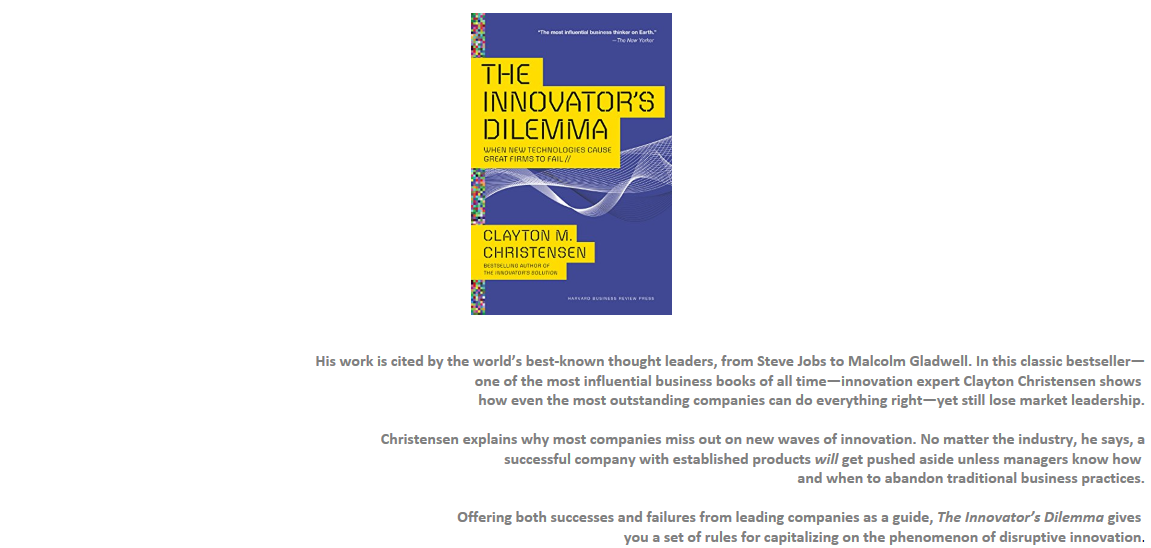
Incumbent firms are likely to lead innovation within their value network – architecture, efficiencies. These are straight forward innovations. Their value and applications are clear. They are likely to lag in technologies that are in emerging value networks. Those customer needs are hard to spot and complex. Their value and application are uncertain – according to the criteria used by incumbent firms.
The attacker’s advantage is associated with a disruptive technology change. The essence of the attacker’s advantage is in the ease at which attackers – relative to incumbents – identify and make strategic decisions to attack. And develop emerging market applications – or value networks. The advantage is the flexibility to change strategies or cost structures.
Another example was hydraulics replacing steam shovels.
Resource Allocation: Thousands of decisions made every day by hundreds of people. Rationing of time and $$.
- Sometimes a rational, top down allocation model: Senior managers weigh competing proposals for innovation, and put money into projects that are consistent with firm strategy. And those which have the highest return on investment.
- Most proposals to innovate are generated from deep within the organization. Not from the top. Bubble up from the bottom. Middle managers play a critical role. They have to filter out the good and bad. In this setup, the managers who get behind the right projects see a big career boost.
- Can’t penalize them for all failures. Sometimes technology just doesn’t develop. Decisions that don’t have a market are much more serious though.
- The focus is on market demand
In the tug of war for development resources, proposals targeted at the explicit needs of existing customers – or existing users – will always win. Proposals for markets that don’t exist almost always lose. The easiest path to growth – right now – is upmarket. Though the most dangerous attacks come from below.
Often times, in a large multi-billion $ company a market of $20-30 mil is insignificant. Until it starts growing exponentially. Then they are too far behind.
- Computer makers back in the day were focused on moving “up market” to higher performing mainframes. Missed the PC market. Because “nobody wanted them”.


